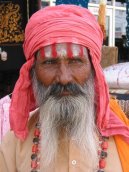India
India: Travel tips, articles, photos, gallery, cities database, population, pics, flags, statistics, free maps online
Back to Countries, Click to read the whole article: India
| Introduction - India: | | Location - India: | | People - India: | | Government - India: | | Economy - India: | | Communications - India: | | Transportation - India: | | Military - India: | Military branches | Army, Navy (includes naval air arm), Air Force, Coast Guard, various security or paramilitary forces (includes Border Security Force, Assam Rifles, National Security Guards, Indo-Tibetan Border Police, Special Frontier Force, Central Reserve Police Force, Central Industrial Security Force, Railway Protection Force, and Defense Security Corps) | | Military service age and obligation | 16 years of age for voluntary military service (2001) | | Manpower available for military service | males age 16-49: 287,551,111
females age 16-49: 268,524,835 (2005 est.) | | Manpower fit for military service | males age 16-49: 219,471,999
females age 16-49: 209,917,553 (2005 est.) | | Manpower reaching military service age annually | males age 18-49: 11,446,452
females age 16-49: 10,665,877 (2005 est.) | | Refugees and internally displaced persons | refugees (country of origin): 77,200 (Tibet/China), 50,730 (Sri Lanka), 9,700 (Afghanistan)
IDPs: at least 600,000 (about half are Kashmiri Pandits from Jammu and Kashmir) (2006) | | Military expenditures percent of gdp | 2.5% (2006) | | Trafficking in persons | current situation: India is a source, destination, and transit country for men, women, and children trafficked for the purposes of forced or bonded labor and commercial sexual exploitation; the large population of men, women, and children - numbering in the millions - in debt bondage face involuntary servitude in brick kilns, rice mills, and embroidery factories, while some children endure involuntary servitude as domestic servants; internal trafficking of women and girls for the purposes of commercial sexual exploitation and forced marriage also occurs; the government estimates that 90 percent of Indias sex trafficking is internal; India is also a destination for women and girls from Nepal and Bangladesh trafficked for the purpose of commercial sexual exploitation; boys from Afghanistan, Pakistan, and Bangladesh are trafficked through India to the Gulf states for involuntary servitude as child camel jockeys; Indian men and women migrate willingly to the Persian Gulf region for work as domestic servants and low-skilled laborers, but some later find themselves in situations of involuntary servitude including extended working hours, nonpayment of wages, restrictions on their movement by withholding of their passports or confinement to the home, and physical or sexual abuse
tier rating: Tier 2 Watch List - India has been on the Tier 2 Watch List since 2004 for its failure to show evidence of increasing efforts to address trafficking in persons | | Disputes international | since China and India launched a security and foreign policy dialogue in 2005, consolidated discussions related to the dispute over most of their rugged, militarized boundary, regional nuclear proliferation, Indian claims that China transferred missiles to Pakistan, and other matters continue; various talks and confidence-building measures have cautiously begun to defuse tensions over Kashmir, particularly since the October 2005 earthquake in the region; Kashmir nevertheless remains the site of the worlds largest and most militarized territorial dispute with portions under the de facto administration of China (Aksai Chin), India (Jammu and Kashmir), and Pakistan (Azad Kashmir and Northern Areas); India and Pakistan have maintained the 2004 cease fire in Kashmir and initiated discussions on defusing the armed stand-off in the Siachen glacier region; Pakistan protests Indias fencing the highly militarized Line of Control and construction of the Baglihar Dam on the Chenab River in Jammu and Kashmir, which is part of the larger dispute on water sharing of the Indus River and its tributaries; UN Military Observer Group in India and Pakistan (UNMOGIP) has maintained a small group of peacekeepers since 1949; India does not recognize Pakistans ceding historic Kashmir lands to China in 1964; to defuse tensions and prepare for discussions on a maritime boundary, India and Pakistan seek technical resolution of the disputed boundary in Sir Creek estuary at the mouth of the Rann of Kutch in the Arabian Sea; Pakistani maps continue to show its Junagadh claim in Indian Gujarat State; discussions with Bangladesh remain stalled to delimit a small section of river boundary, to exchange territory for 51 Bangladeshi exclaves in India and 111 Indian exclaves in Bangladesh, to allocate divided villages, and to stop illegal cross-border trade, migration, violence, and transit of terrorists through the porous border; Bangladesh protests Indias attempts to fence off high-traffic sections of the border; dispute with Bangladesh over New Moore/South Talpatty/Purbasha Island in the Bay of Bengal deters maritime boundary delimitation; India seeks cooperation from Bhutan and Burma to keep Indian Nagaland and Assam separatists from hiding in remote areas along the borders; Joint Border Committee with Nepal continues to examine contested boundary sections, including the 400 square kilometer dispute over the source of the Kalapani River; India maintains a strict border regime to keep out Maoist insurgents and control illegal cross-border activities from Nepal | |
This page was last updated on 16 September, 2007
Source: CIA >>> |




